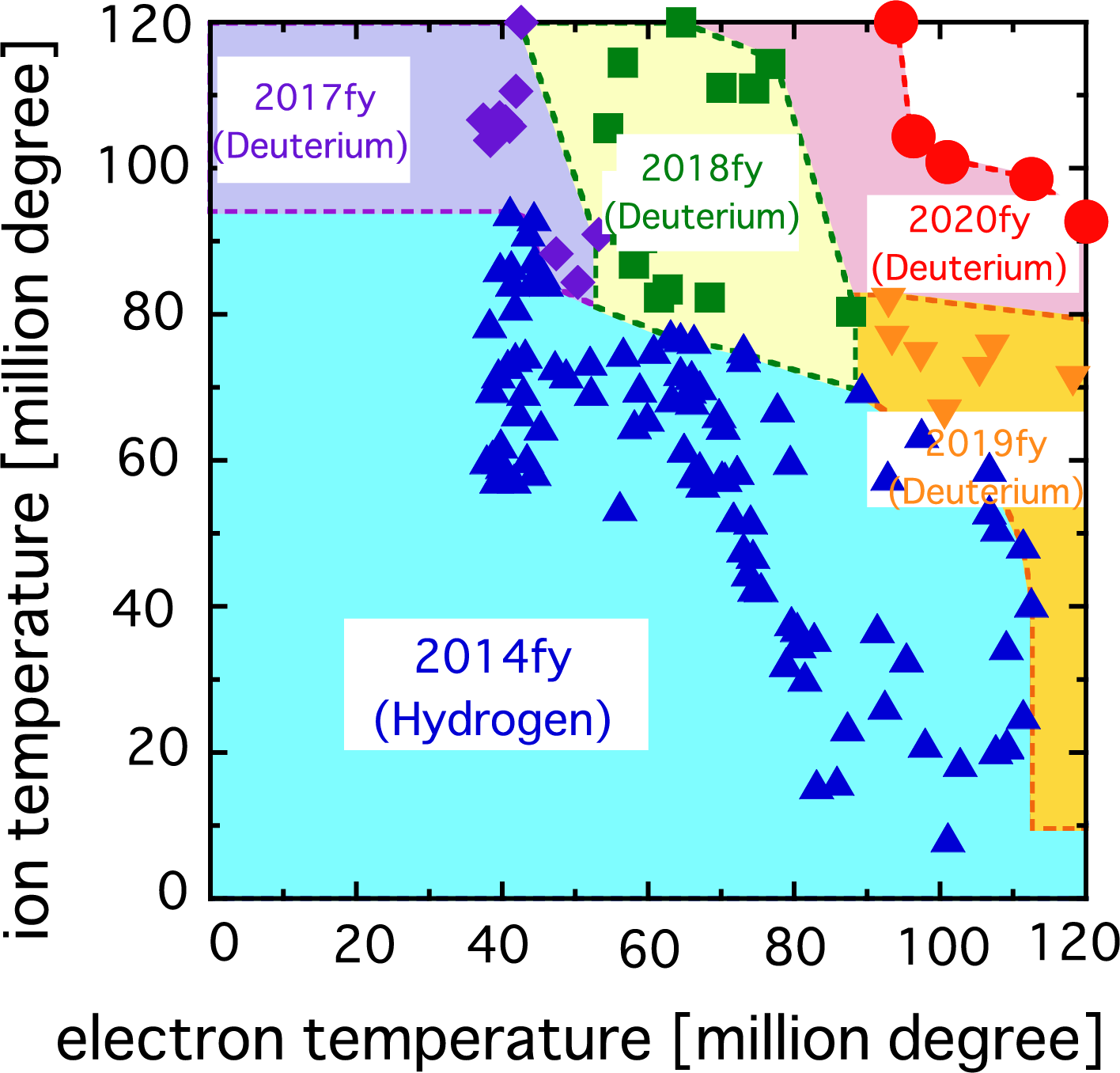Progress in Research
Research on confining high-temperature plasmas with magnetic fields is being conducted around the world with the aim of realizing nuclear fusion power generation. At the Large Helical Device (LHD) of the National Institute for Fusion Science, a "deuterium plasma experiment" has been conducted since 2017 to generate plasma using deuterium gas, and an ion temperature of 120 million degrees Celsius, which is one of the conditions for nuclear fusion, has been achieved. In the LHD, we are also conducting experiments on mixed hydrogen isotope plasmas of "deuterium" and "hydrogen" to simulate the mixed hydrogen isotope plasmas of "deuterium" and "tritium" that will be used in future fusion power generation. This experiment has produced results that will form the basis of future fusion research, such as the world's first observation of mixed hydrogen isotopes.
The realization of fusion power generation requires the stable maintenance of such a high-temperature plasma for a long period of time, and there are many issues to be solved to maintain this stability. Plasma confined by a magnetic field must be kept at a high temperature of more than 100 million degrees Celsius in the center where the fusion reaction takes place, while the plasma in the periphery must be kept as low as possible to reduce the heat load on the walls of the device that confines the plasma. This temperature gradient is extremely steep, 100 million degrees in about one meter. When the temperature gradient becomes steep, turbulence with various sizes of vortices is generated in the plasma, and this turbulence stirs the plasma, resulting in a low center temperature. In addition, when the plasma pressure gradient becomes steep, the plasma becomes unstable, and a part of the confined plasma may be lost (this phenomenon is called instability). Therefore, it is necessary to understand turbulence and instability and to establish methods to control them in order to maintain plasma stability.
In the LHD deuterium plasma experiment in FY2020, we succeeded in generating a plasma with both electron and ion temperatures reaching 100 million degrees. Until now, plasmas with an ion temperature of 100 million degrees or higher have had a low electron temperature, and with this success, we were able to establish a method to produce plasmas that reach 100 million degrees. With this success, the LHD research has entered a new stage.

Physics experiments on deuterium and hydrogen isotope mixed plasmas have led to new discoveries about turbulence and instability that interfere with maintaining plasma stability. With regard to turbulence, we found that the central and peripheral regions of the plasma require completely different control. We found that in the center of the plasma, a steep temperature gradient can be formed by reducing the turbulence, whereas in the edge, increasing the turbulence reduces the heat load on the device. Therefore, it became clear that it is desirable to control the turbulence by suppressing it in the center of the plasma and increasing it in the edge. Experiments have shown that turbulence, which has been emphasized as a negative aspect of fusion, has a positive aspect. There are two types of plasma instabilities that occur when the pressure gradient becomes steep: those that appear slowly and persist, and those that appear suddenly. Suddenly appearing instabilities are like earthquakes in that they can occur at any time, but we do not know when they will occur. For this sudden type, important experimental results were obtained to clarify the "trigger" and the "effect on the plasma.
Physics experiments on plasma turbulence and instability have provided important insights for the development of control methods for turbulence and instability in future fusion plasmas. Turbulence and sudden instabilities are considered to be deeply related not only to fusion plasmas but also to various phenomena occurring in space and on the earth. We are planning to promote such interdisciplinary research in the LHD.
